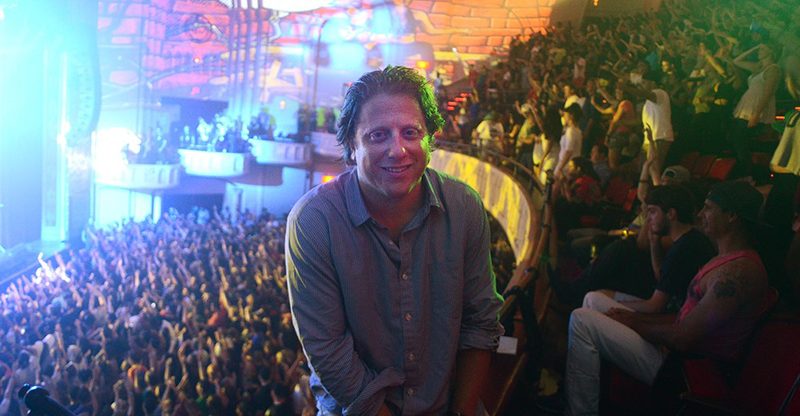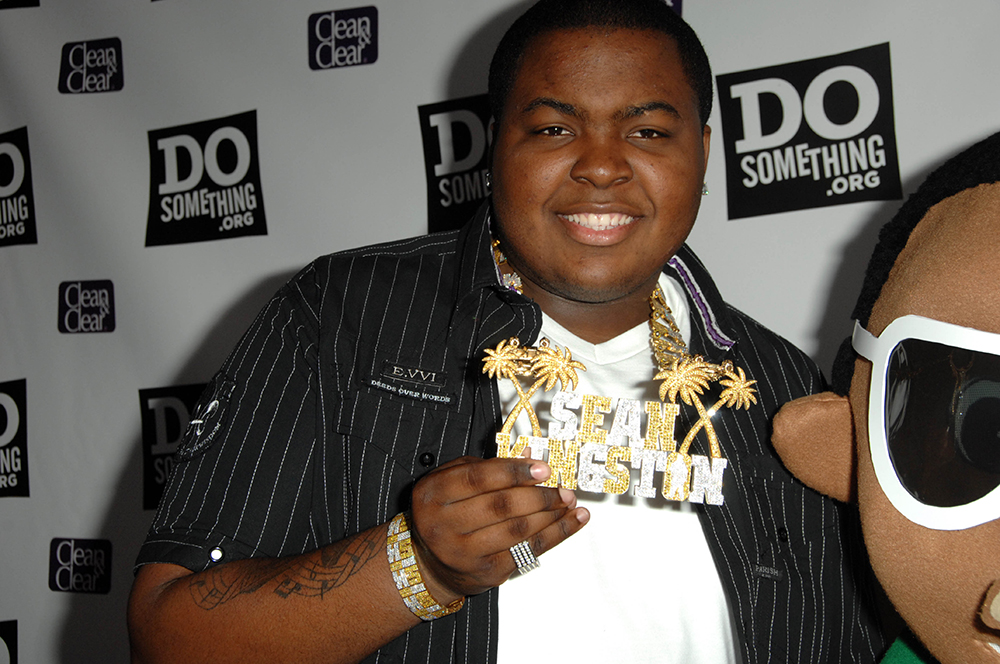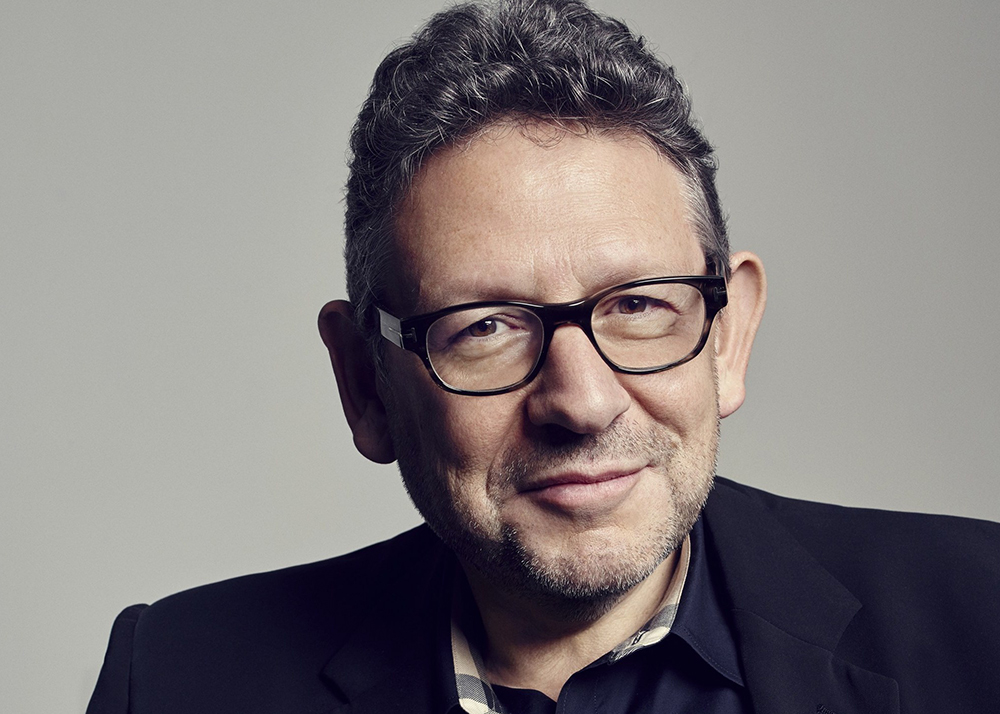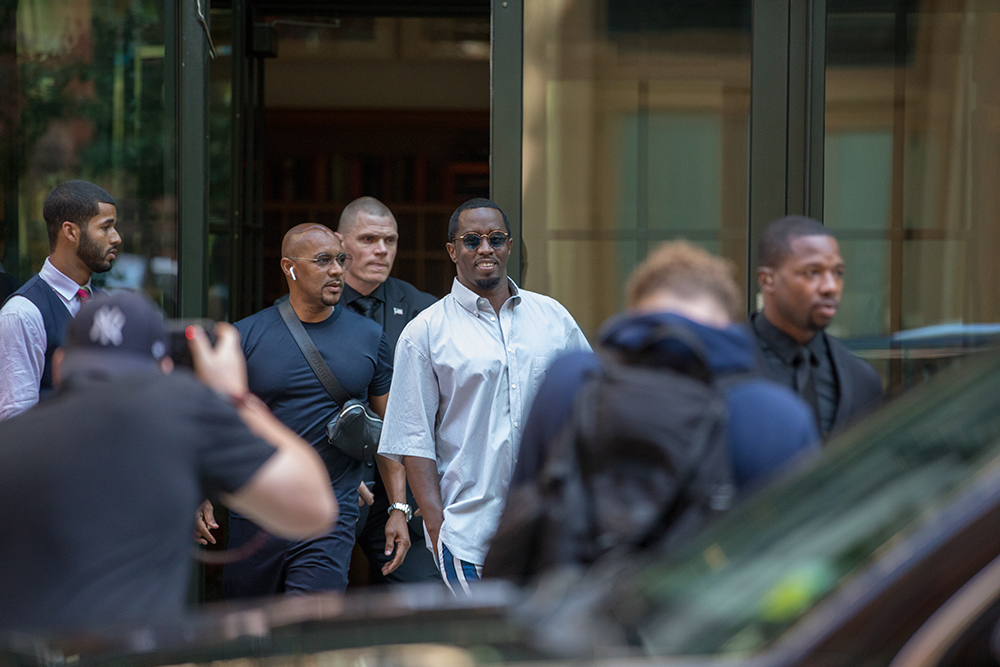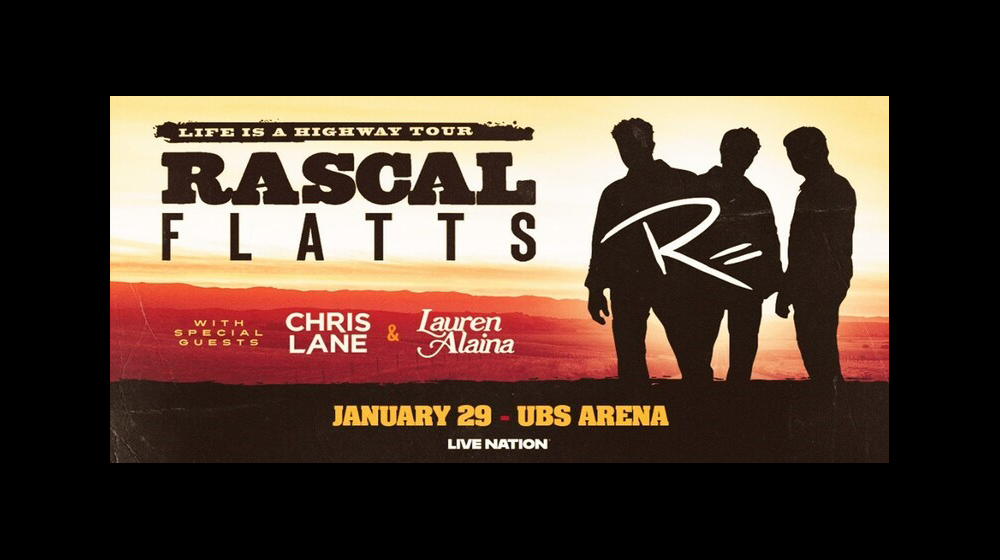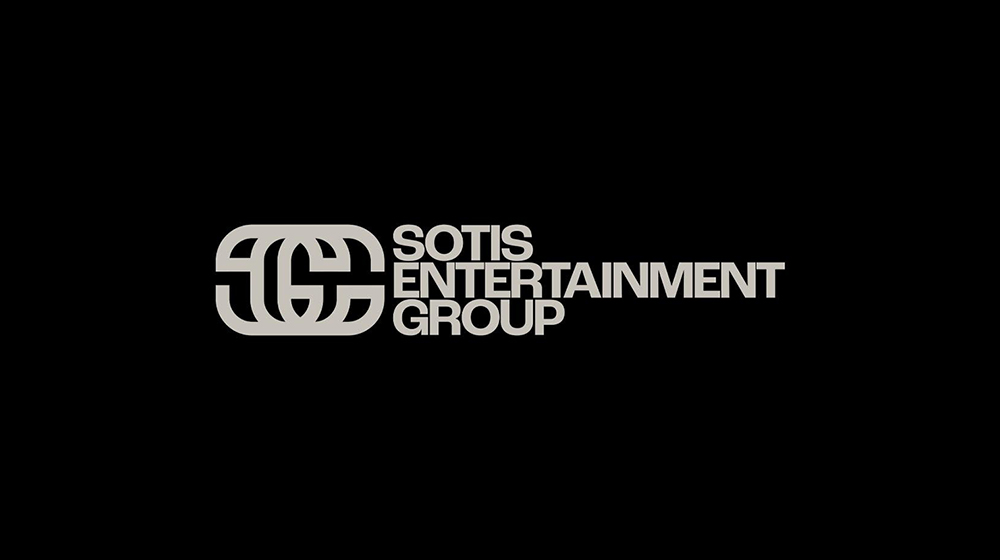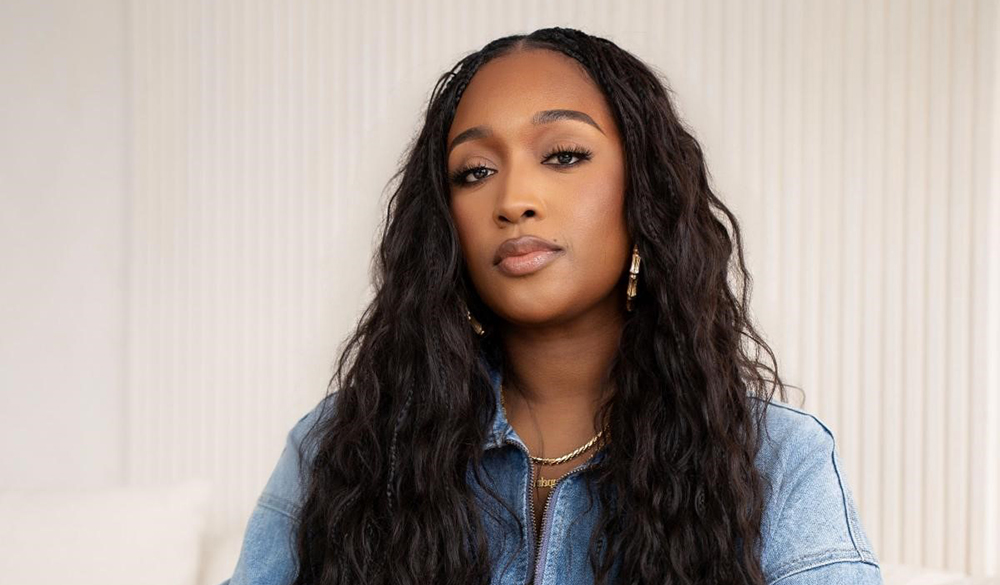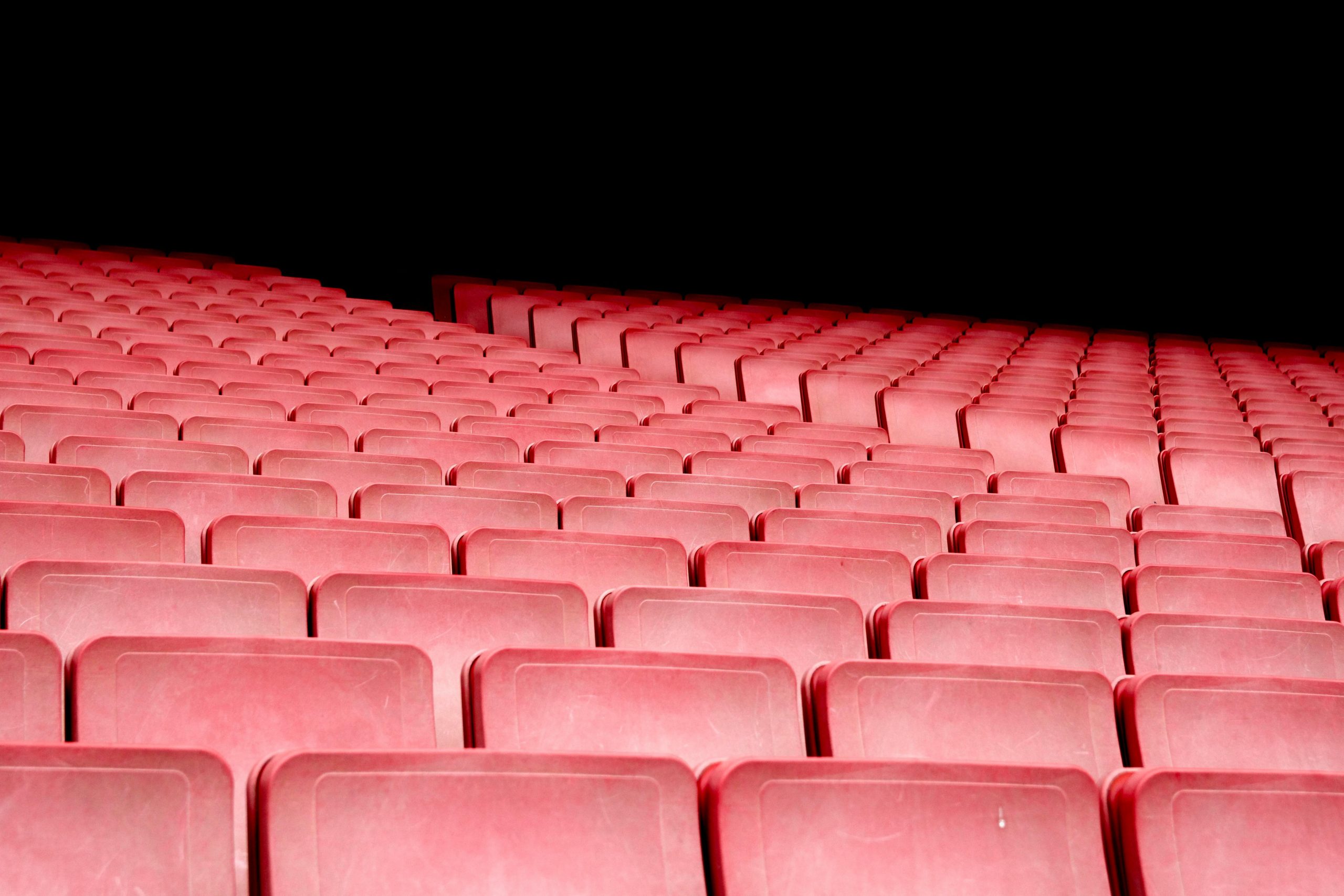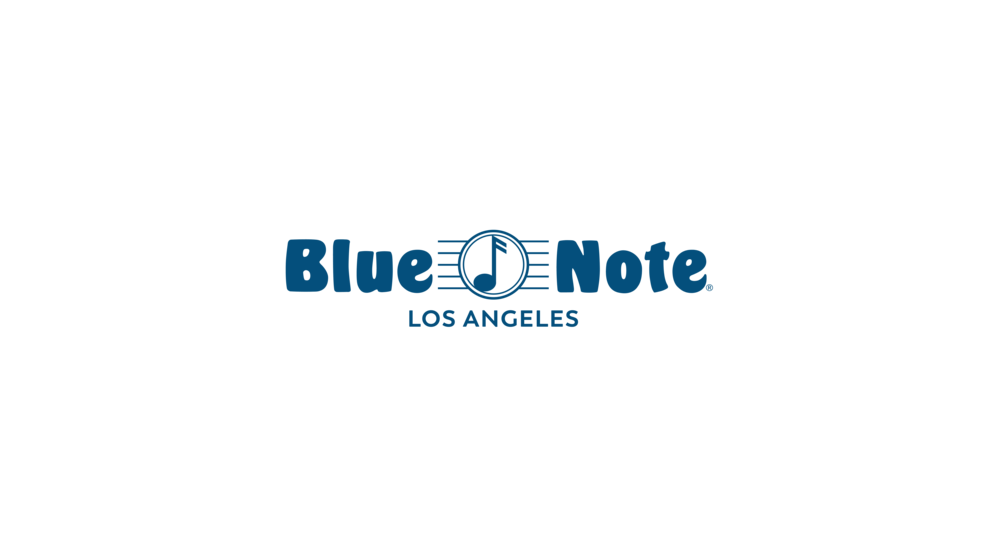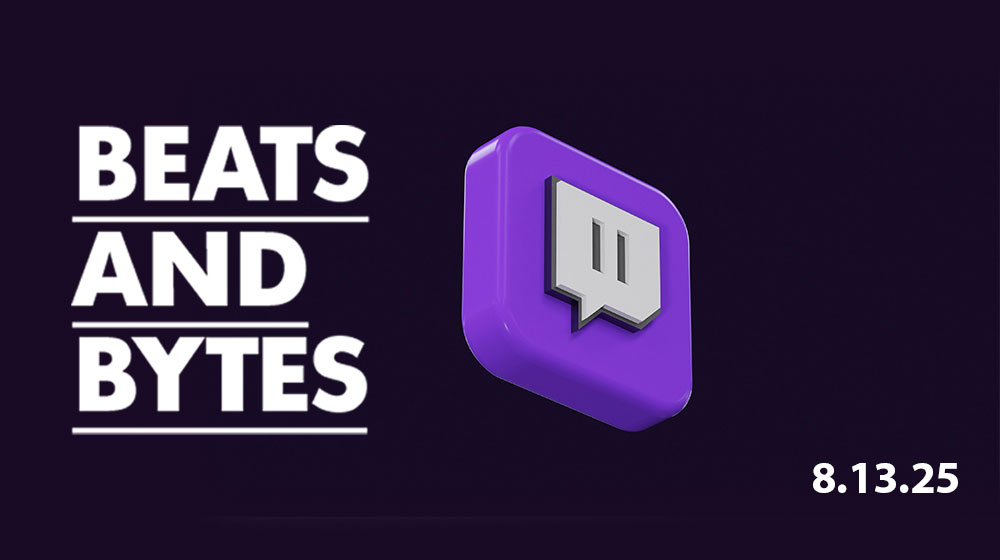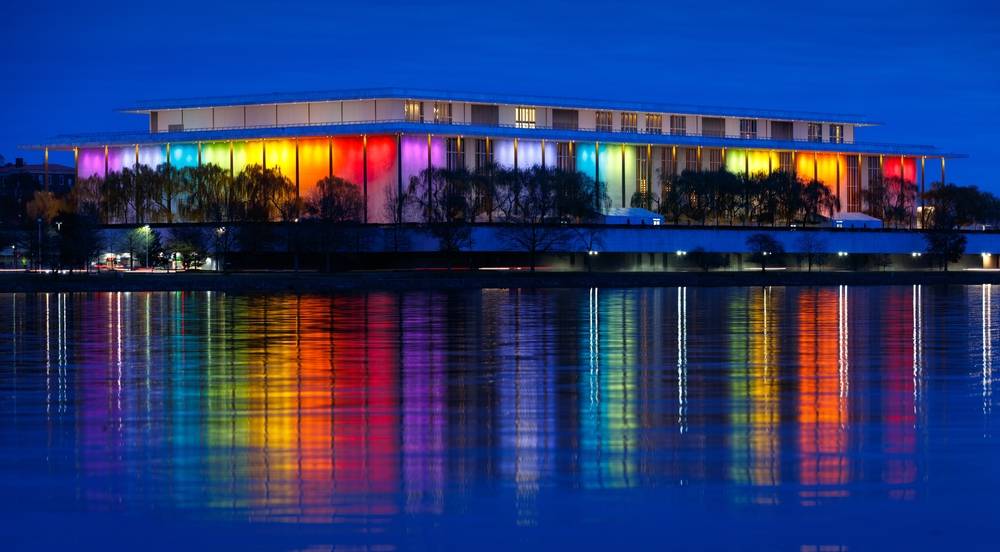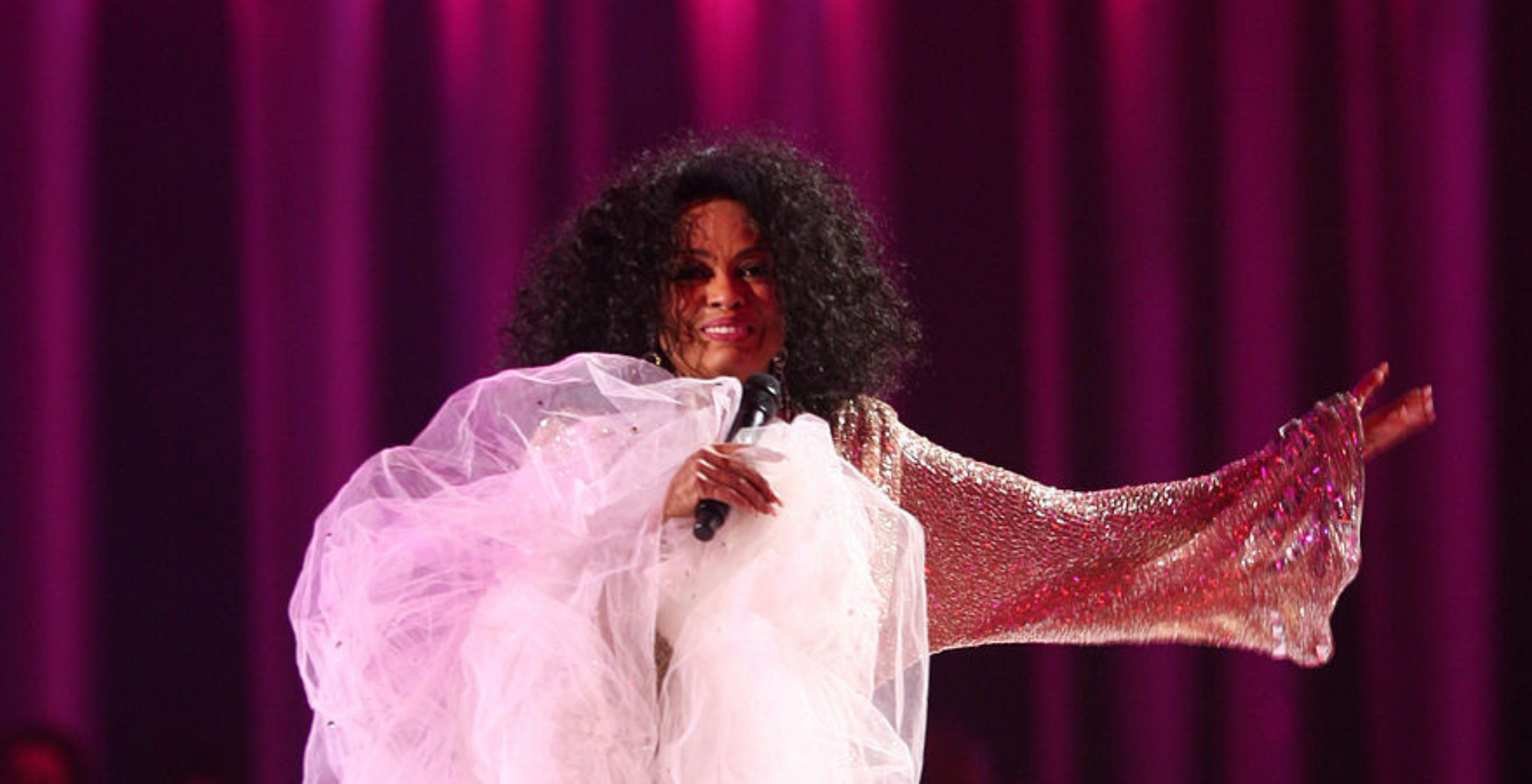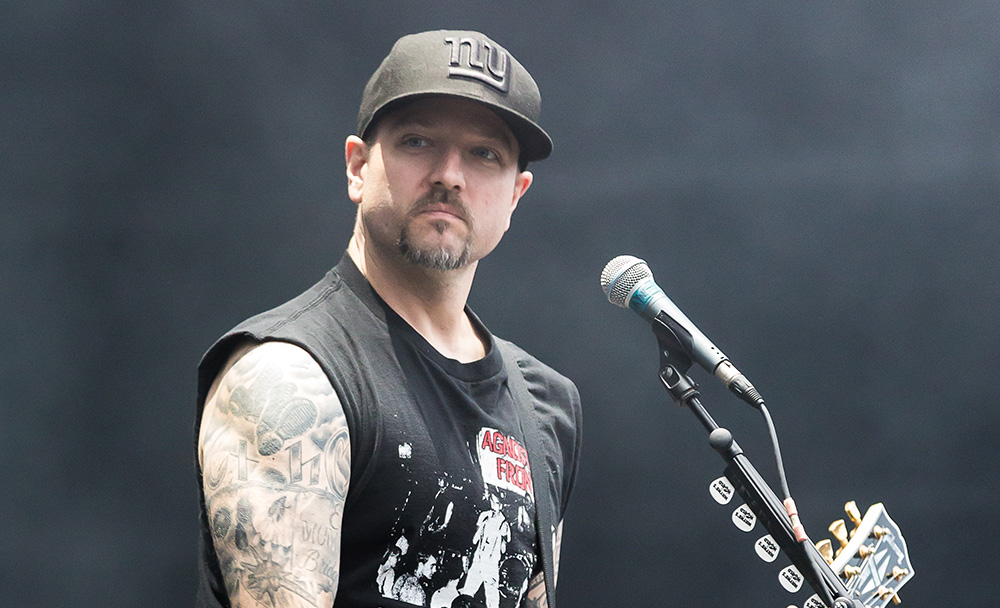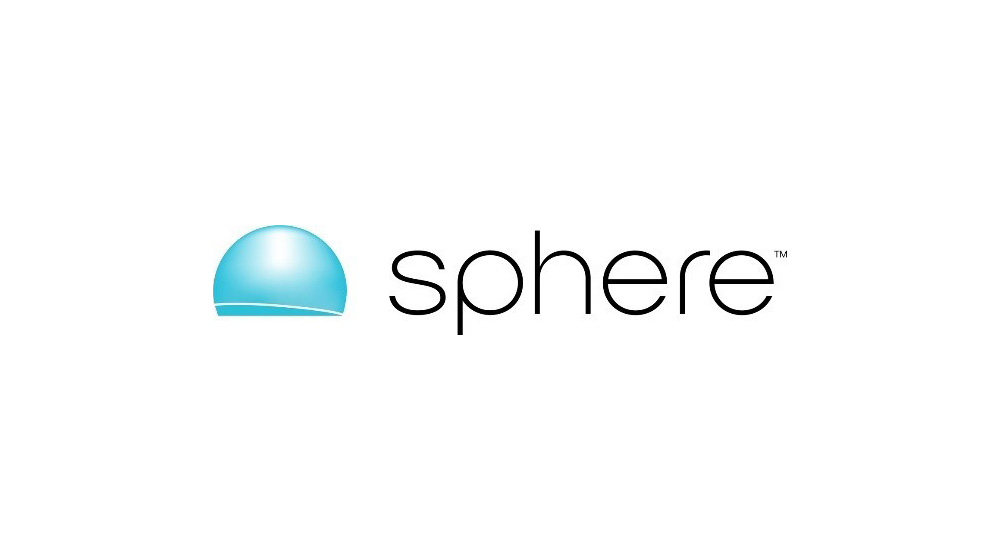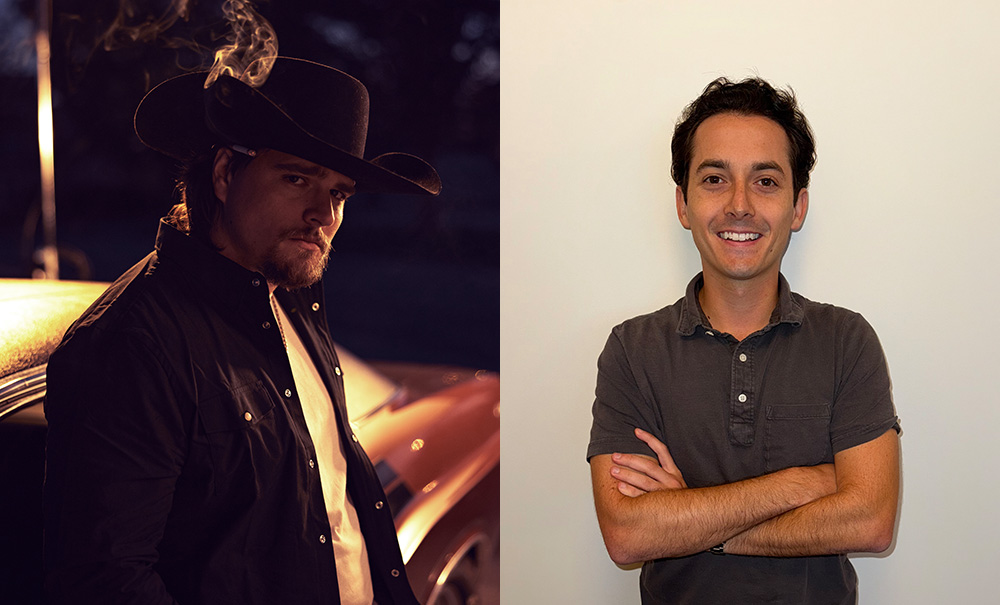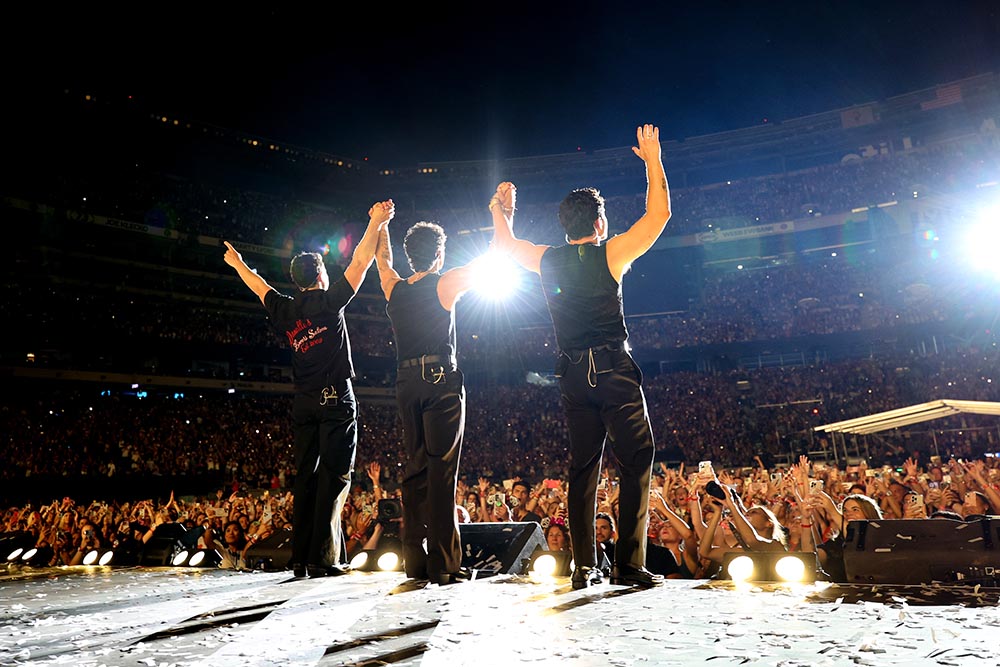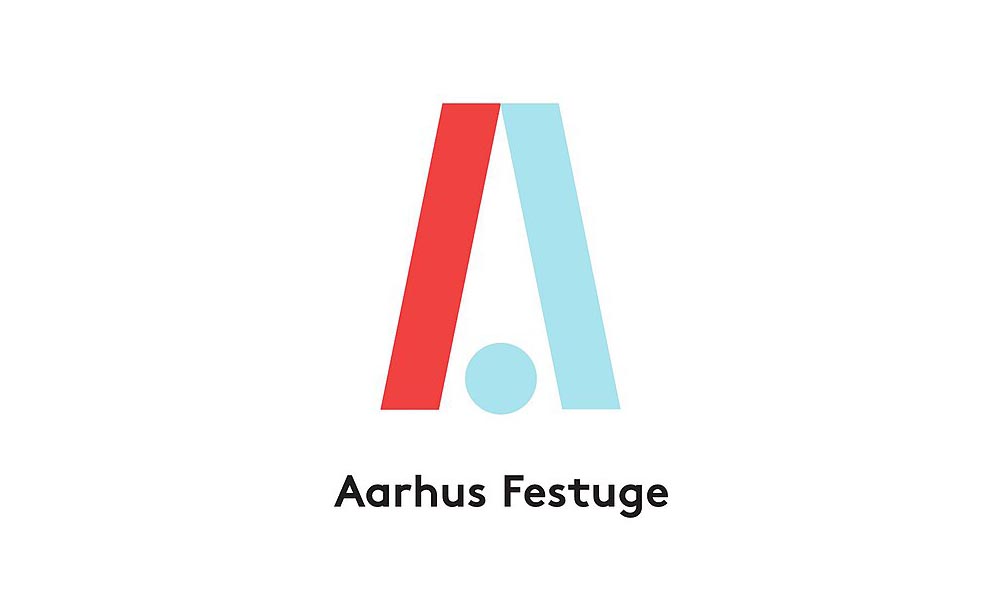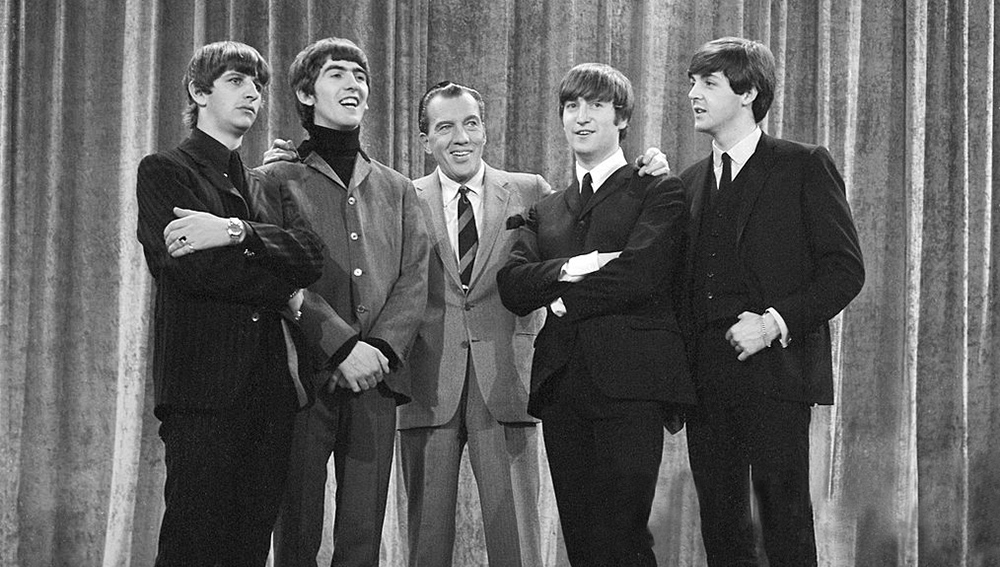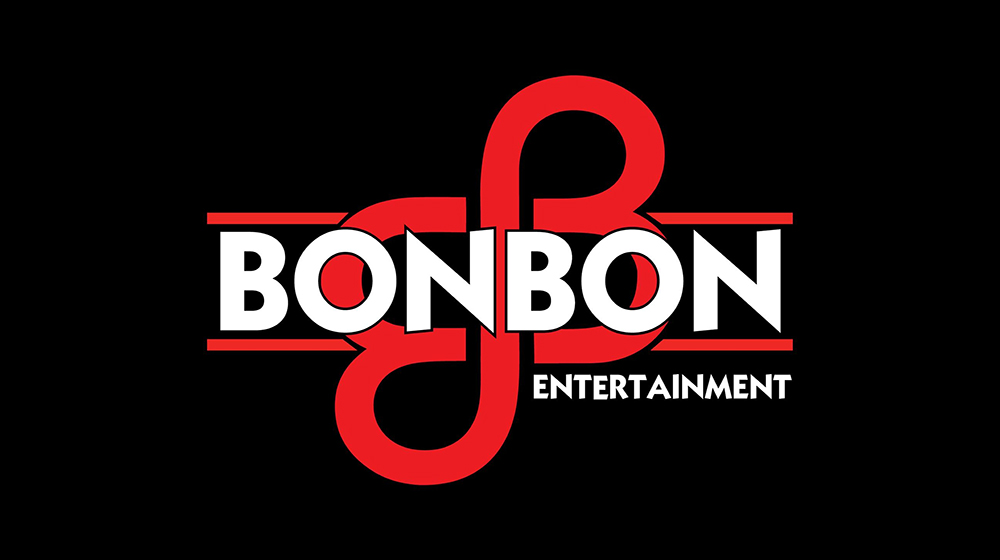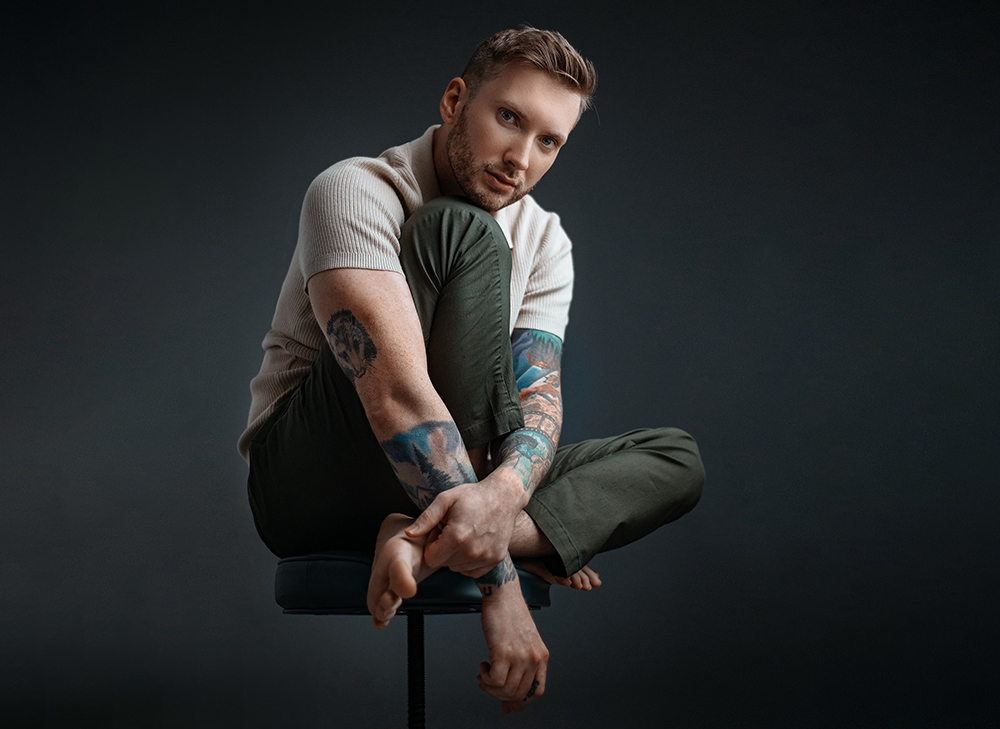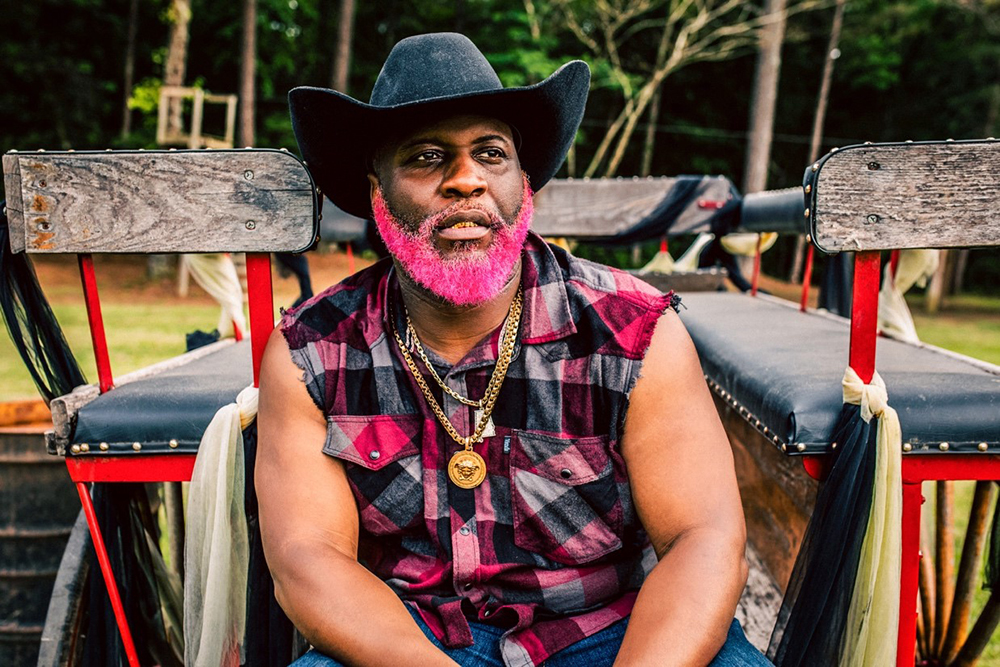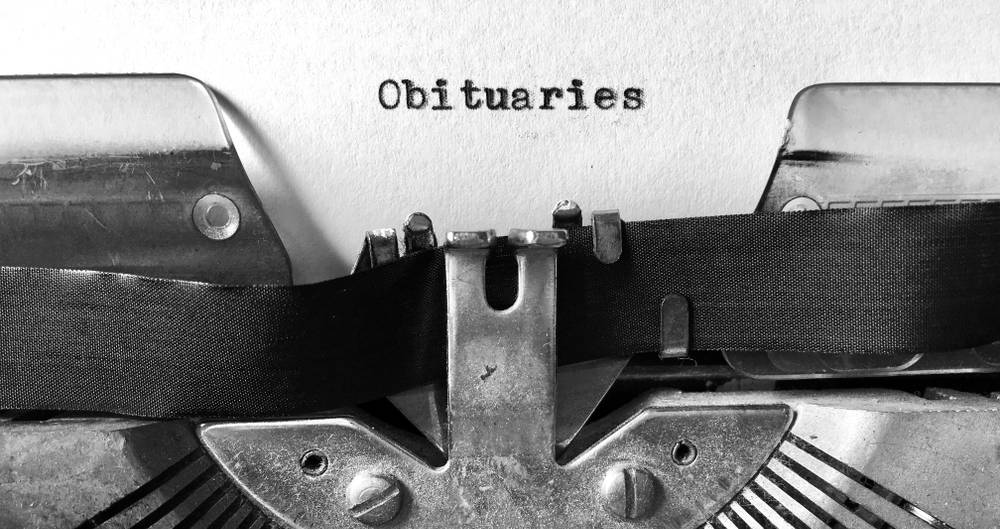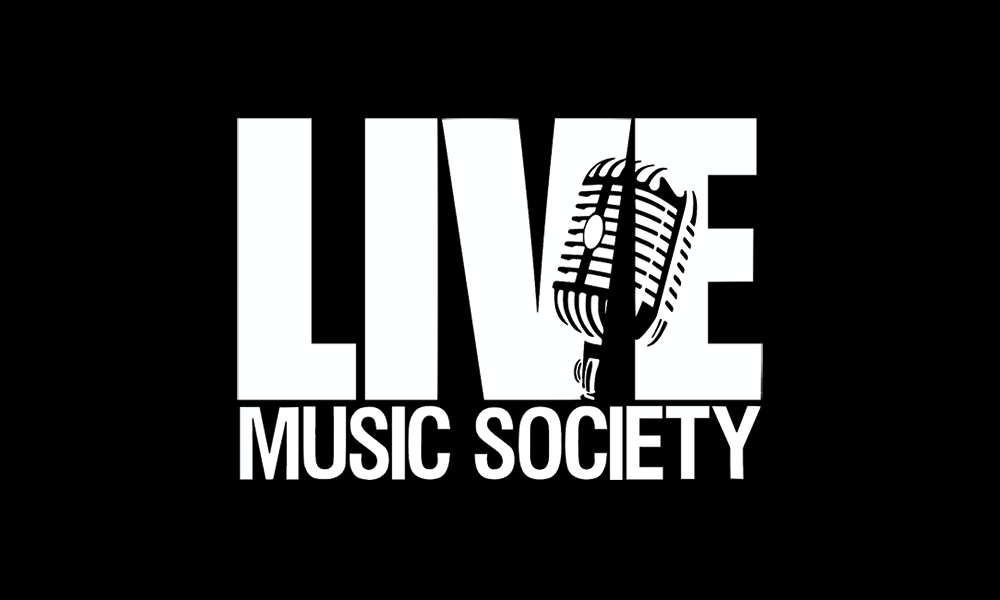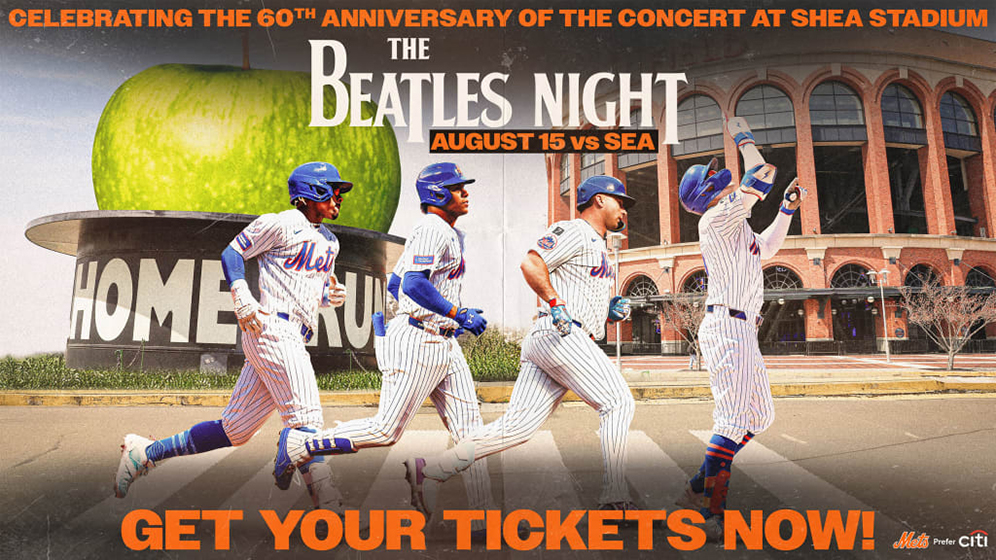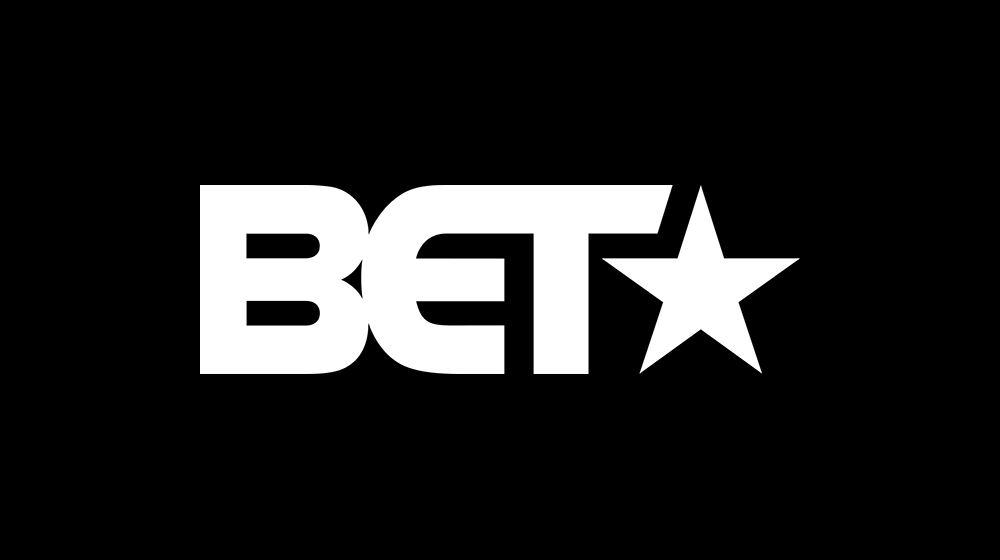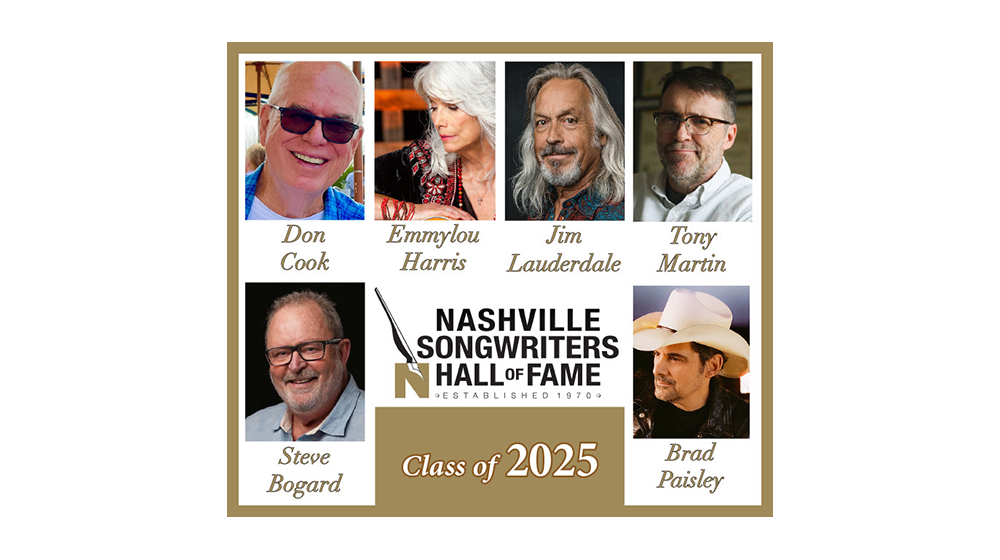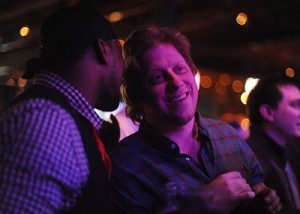
The big booming musical-instrument salesman Harold Hill from the Broadway and film musical “The Music Man” pales to Peter Shapiro.
Shapiro is also a canny salesman/showman, but his jam-packed world celebrates the belief that the live musical experiences he presents at his venues and festivals should be joyous experiences, and that the presenting artists he hires be highly valued.
Whether it be fan-immersing, artist-pleasing events at his Capitol Theatre in Port Chester, Westchester County, or his pair of Brooklyn Bowls in Williamsburg, Brooklyn (the first green bowling alley in America), and Las Vegas or the annual Lockn’ Festival, or his music magazine Relix, Shapiro is an impassioned believer in hard graft to make events magical.
In 1996, the 23-year-old Shapiro purchased his first club, the Wetlands Preserve in Manhattan, and turned it into a late-night paradise for jam bands, ska acts, and social activism.
Wetlands, however, shuttered in 2001, a victim of escalating New York rents.
The first Brooklyn Bowl, built in Williamsburg in a former factory followed in 2009, the same year Shapiro bought Relix magazine, originally launched in 1974 as the Grateful Dead newsletter.
In 2012, Shapiro revived the Capitol Theatre, a long-dormant former rock palace. In 2014, Brooklyn Bowl Las Vegas opened.
Along the way Shapiro has produced two IMAX concert films, “All Access” and “U2 3D” with his brother Jon; launched an environmental consulting firm GreenOrder with his other brother Andrew; and co-produced the Grateful Dead’s 50th-anniversary “Fare Thee Well” tour in 2015.
Earlier this year Shapiro put together teams to film the Women’s March on Washington, and the March of Science on the National Mall.
What an independent concert promoter does is a ballsy high wire act. They present events often knowing bankruptcy could soon follow.
I’ve been close a couple of times. Guess what? I would say that somebody that has been doing what I have been doing, if they have not come close to bankruptcy a couple of times, I don’t think that they did it right. They ought to be able to make more money. I am not saying say that they didn’t do it right and that they didn’t make more money, but they didn’t do events like “Jazz & Colors” like I did.
[On November 10, 2012 Shapiro launched the inaugural Central Park free “Jazz & Colors” event, featuring 30 bands all playing a single common set list.]
The live music world is dominated by both Live Nation, and to a lesser degree by AEG Live. You partner with both as well as with Madison Square Garden. You are like Switzerland.
Right.
You will work with others as long as you keep creative control?
I have worked to do that. It hasn’t been easy. It’s the best of all worlds to collaborate with the big guys to utilize the resources that they have. You tap into the skills sets of the people that are there. There are good people at these companies. And I hope I can continue to collaborate with these different leading companies in the entertainment space. It’s a great, great thing. Not many (independent) do that. Usually, they pick one or the other, and they go with it. And there aren’t many of us (independents) left.
You have dipped your feet into the high-stakes festival world with the Virginia-based Lock’n Festival an annual four-day music festival held at Oak Ridge Farm in Arrington, Virginia. Festivals are a big boy game because a lot of money is at play.
Ah, it’s a hard big boy game. You learn that a lot. I am very happy that you call me on this day (when Democrat Ralph Northam won Virginia’s gubernatorial race, and Democrats also won a surprising number of races for the Virginia House of Delegates). It’s a great day for the state of Virginia. I’ve got the big camping music festival. We have done it for 5 years, and we have a great 6th year coming. We have just confirmed our headliner, but I can’t tell you who it is but I am excited. We are outside Charlottesville, and we have Lockn’ people that come from around the country. A lot of Grateful Dead people are at it. People travel from all over the country and go to Lockn’ for camping. If that election had gone a different way there would have been a lot of people saying, “I am not traveling in my VW bus to Virginia.” And they (the voters) flipped it. Now, I think that people will say, “We want to go and support that state. They made a statement.”
Why the recent Red Light Management minority stake in Brooklyn Bowl? I know that you have known Red Light Management’s owner Coran Capshaw for 30 years. Why do the deal?
That was with Red Light, but I would say it was more Coran. There are not a lot of people on the planet who I can speak with who understand Malcolm Gladwell’s 10,000 Hour Rule. Coran has obviously got a million artists as a manager, and he’s got festival experience. He’s got all of this stuff. He’s a great counsel if I want someone to go to for counsel. Someone I can trust. Someone I like, and someone who is a friend. I like to work with my friends. I had a partner before. Basically, Coran replaced that partner, and I’m very fortunate to have him as a partner.
My old partner said, “You should have a partner who can help you. Who can talk to you about these things.” My first partner didn’t know about anything that we are talking about. He’s not a music guy. He was an old friend who had the financial resources to help me out, but he wasn’t engaged. The first guy I thought about was Coran. I have known him since Wetlands, and he crosses into so much stuff.
Are you seeking to franchise out Brooklyn Bowl or open up new outlets on your own?
Yeah. There will be news of some things that we are working on. I don’t think we will go to franchising. We control the venues. I operate them in Vegas, and we control it. The same with the Lockn’ Festival, and the Cap (Capitol Theatre). We are doing a lot of things, but there are more things coming on a couple of levels, and you will see something coming.
In 1997, you took over Wetlands Preserve, a downtown Manhattan nightclub in the Tribeca neighborhood. You were only 23. Owner Larry Bloch (who died in 2012) wanted someone to take over the club. Your father thought you were crazy. Larry then served as an influential life counselor to you.
Yeah, it (the acquisition) wasn’t looked upon well (by my family), but I figured Larry could surely tell me the things to do. I wasn’t the first guy there. I couldn’t have done it at 20. I took over an existing thing. He gave it to me. I didn’t have to pay big money. I paid him on a note every month. My rationale was, “Okay, this place is really famous. Here’s the rent. Here’s the Con Ed bill. The garbage bill. The water bill. I’ve got to be able to draw at least even.” I was 23. I didn’t have a family of my own. I had low overhead, so I didn’t need to make a lot of money.
Wetlands was where groups like Pearl Jam and Oasis played their first New York City gigs, and Dave Matthews was an early semi-regular. A great vibey club, but it was hampered by poor sightlines of the stage.
Yeah. That’s why I built Brooklyn Bowl. I learned, right? As an entrepreneur, you learn so much. So I learned. The sightlines were not great there, but because the sightlines weren’t great people were forced to watch the show over at the bar or downstairs in the lounge. They really couldn’t see the show. They could hear it, and they were talking to friends. So they were interacting with people. If you go to a venue where it’s perfect sightlines in New York, it’s The Bowery Ballroom and Irving Plaza, and you are not interacting with people as much. You are cocking your head back, and you are watching the show.
Was the importance of Wetlands in your career that you made deep connections with bands like the String Cheese Incident, the Disco Biscuits, and Phish?
Yeah. I had a great run there, from 23 to 29 years old when I had no kids. Whether String Cheese finished at 2 AM, and the Biscuits played to 3 or 4 AM, I was there. I was there to give them a shot of tequila. I had the bottle in the green room. I didn’t have to wake up for my kids the next morning, which I have to do now. I didn’t need to pull the same money out to try and make it then as I do now with a family and all of that. I didn’t have a family. I could run it in a more pure way. More true to what made the venue a great venue. That was the first priority that I had. I was trained by Larry Bloch, and I was into it. I believed. So I was idealistic, naive, and I believed. So I tried to do things, and I did do things according to, “What is the best move for the experience of the fans of the venue?” And that does not always align with the concept of, “How much money can I make?” I didn’t need the money. I wasn’t a rich kid or anything. It was more I didn’t have any kids. I didn’t have to pay for school. I didn’t have a wife. I lived with three other people above 77th Street and York Avenue in New York where rents were pretty cheap. For New York City, at least. The low overhead, I had. Really my adult education it was Larry Bloch who started it, and he built it (the club) not just because of a need, but an obligation that there should be a venue. It just wasn’t about making money.
Larry Bloch was also a Dead fan.
Yeah, Wetlands was built by Deadheads for Deadheads. That was the thing.
Specifically, what did Larry teach you?
That the first priority should be the experience that the fan has at the show. That was number one priority. And that there is money below that. If you are working for a big or a public company, you have an obligation to make money. So we’d do shows that probably someone working at SFX, which is now Live Nation, where it was, “You are not allowed to do that show” by which I mean that it is a Saturday afternoon, and we are doing a hardcore show, maybe, with Agnostic Front, a hardcore band at three in the afternoon. There are 700 or 800 people on hand. Seven or eight security and the bar does like $300 for the whole day because you put out free water. So you are doing a show where you are spending thousands on the band and the crew—let’s say the band gets covered on the door—and the production, and security. You aren’t selling drinks. You are giving out free water.
It was an investment. People at that show would remember it, and they would return.
You and me, we are on the same page. What I was brought up to learn is that you have to invest. That will pay off long term. If I worked for Live Nation or a big company like AEG Live, and I was losing money on a Saturday afternoon with Agnostic Front doing 800 people with a $300 bar with 10 security there because they aren’t drinking anything, and it loses money I’m not sure…Listen, maybe, there’s a head of some big company that will say, “That’s cool. We can lose money on a Saturday afternoon because you are building loyalty. You are building a relationship with the fans and the venue.” However, big companies do stop creating shows that lose money when they sell out.
The music industry is so often based on short-term money.
Right. I learned from Larry not to think that way. That it pays (going) forward. I hope that it pays going forward. To think long term. To develop bands. Hopefully, you will do more with them. Believe that you will. Not just to be a skeptic and a cynic, but create a community. Work with your venues to mold them in the physical structure, and staffing levels. Put on the back of their (staff) jackets that it says, “WELCOME.” Not “SECURITY.” Try to create an environment where people come up to me from the audience, and say, “I met my wife there (at Wetlands). Because I couldn’t see the damn band, I was downstairs in the basement meeting my future wife.” The environment lent itself to that. At The Bowery Ballroom, and at other top venues in America and in Canada, I don’t think that you hear that as much.
Wetlands, as with most clubs, was faced with what happened with McDonald’s, and Burger King years ago. “We have this great building, but it’s empty part of the day. Can we do breakfast?” Not only are the Brooklyn Bowls both bowling alleys, but during the day there are so many other activities going on.
Particularly, the weekends when we are open at 11 AM. We do a kids’ show at 11:30 AM. We are doing with the DJs, and you can watch sports. And then we have a band at 9 PM, and a late show at midnight. We are moving three shows around.
So many different things are going on.
We learned. Brooklyn Bowl was built by a very direct relationship to the people that owned Wetlands. Me. I learned at Wetlands. We talked about the different areas of the club that was created because you could not see the show (at Wetlands). You backed off, and you could hear it at the back of the bar downstairs. Like a small town. While we created that at Brooklyn Bowl, we had great sightlines, great air, high ceilings, but then later came the village, the different pockets of the village, the different parts of the village. We added some food, and we integrated everything with the visual screens where you get a great view, and a great sound and we really tried to create something at the site. It’s an amazing venue that stands on its own as a venue.
You started Brooklyn Bowl with Charley Ryan.
He was the general manager of Wetlands when I owned it.
Brooklyn Bowl was previously an ironworks-foundry building in the 1880s. So obviously, there’d be great sightlines.
We do have great sightlines, but we also added elements. Most venues with live music have been around since there was rock and roll concerts in the ‘50s, and most venues are a stage facing a bar. That do have pretty good sight lines. Pretty simple, right? The Brooklyn Bowl was an effort to take what was there; take what we’ve learned at those clubs that are cool, and try to elevate all that. Really try to elevate everything. You learn, and take from what you see out there. I’m a big fan of Malcolm Gladwell’s 10,000 hours shit. I meet people all the time who say, “I can come in, and do this (oversee a venue). I know how it works.” Nah, it takes someone a lot of hours to really get good at something. The 10,000 hours thing, right? To be really good, to be excellent, you have to do a load of work over the years. And I got good. I’ve put on a show in New York pretty much every year for 20 years, so I know when I walk into a room now about the vibe, the deal, the light level. The band can feel it. I can feel it. I’ve been trained for this. I am good at this. I’m a little tired from doing it, but I know that I am good at it because I have done it so much.
In 2014, Brooklyn Bowl Las Vegas opened. A 80,000 square foot building not tied to a casino. Your partner is Madison Square Garden, and Caesars Palace is the landlord. Why take the risk in such an entertainment-intensive town? Was it hard to get a foothold?
Hard? Oh, yeah. You don’t see a lot of that stuff, but it’s big companies there. We are independent. We are the only guys that came in, and built a venue of that size and scale that is not in a casino, not getting fed by the casino. But also the magic is that we have our own building. So artists like a Perry Farrell or Beck who, maybe don’t want walk through the bowels of a casino, don’t have to. Across the board we do stuff with sponsors, but not deeply. No naming rights. But you know, the cream rises. People notice the difference in how we treat people. How I do my thing. And in Vegas, it was like that there should be a live music venue doing all of that and there wasn’t.
You recognized something that Las Vegas has been slow to pick up on. I know House of Blues presents alternative bands, but there are few other major venues there offering different types of music. Las Vegas is musically safe. For the most part.
Yeah, and how many clubs in one city do you need?
With a 2,500-capacity, Brooklyn Bowl Las Vegas is a great cap room.
Right. There was room. Every city has room for a great 2,000 to 2,500 cap room. They didn’t have one in Vegas and it’s worked. We have been named two years in a row in Las Vegas Weekly’s Readers’ Choice as the best music venue in Vegas.
But it was hard at first to get a footing there?
It was very hard with all of the shows going on, but we’ve made it, and it’s a great feeling. The same with the Capitol Theatre. It was hard to go in there. You start at the beginning without the infrastructure, and the history. The existing infrastructure that the bigger companies go to a new town and they already have it. To go without it and open, and say, “I am here,” that is hard shit.
Before we talk about the Capitol Theatre, London’s 800-capacity Brooklyn Bowl closed at the end of 2016, three years after it opened. It sits inside the O2 arena complex. As you know, the O2 Entertainment District is undergoing the building of a 205,000 square foot retail development due to be completed late next year. London’s Brooklyn Bowl has been a partnership with AEG Live. What’s going on?
Yeah, it’s a partnership with AEG. There is a pause there. There’s a lot of construction there. We kind of put it on pause while they are doing all that. I will see what I’ll do. I wouldn’t mind being more aware of our neighborhood. In Vegas, we are dead center (in the town). There we went further outside of the city. It’s hard to find land in London.
The O2 arena complex, of course, is across the Thames River.
Yeah. We are across the river in South East London. There are no new venues in the heart of London due to the difficulty of getting real estate, and getting it (construction) approved by the local community councils. We have a partnership there, and we will see where it goes. They are building it out further and during that period there’s construction everywhere around us that makes it harder. So we will see what happens there. But the location there, that was hard.
The regal Capitol Theatre in Port Chester, Westchester County is certainly well-located.
That why I went to the Capitol. We bring that opportunity to a great location near the city, on I-95 accessible to everywhere. A rock palace. There are no rock palaces left. The original Fillmore East is gone. The original Fillmore West is gone. All these theatres are gone. We did an interview for CBS, and they said, “You are working in a rock palace. What does that mean?” At a rock palace, you must have killer food, the Stones, Pink Floyd, (David) Bowie, Janis (Joplin), and the Dead. You need to have those. History matters.
You aren’t going to name the jam band Strangefolk which was your first Capitol concert in 1998?
(Laughing) Well, Jesus Larry, you’re on. I loved that show. So none of these rock palaces were standing. I took this thing. We made it contemporary, and it’s on fire because we are tapping into people who are both from New York City and who can get there by car or train, and from up north. Location is extremely important. And cream rises.
[In its early 1970s heyday, the Capitol Theater played a key role in bringing major acts to the New York suburbs, a relationship that flourished because it was far enough away from Manhattan not to compete with clubs there. Among acts that appeared there were the Grateful Dead Traffic, Jefferson Airplane, Pink Floyd, Santana, and Janis Joplin, who played her next-to-last show at there on Aug. 8, 1970, two months before she died.]
What’s the seating capacity for the Capitol Theatre?
It’s 2,000 for GA (general admission) floor and 1,500 with all seated. It was built in 1926 by Thomas Lamb, who is really the preeminent architect of American theatres (who also designed the United Palace Theater in Upper Manhattan).
For Capitol’s reopening in 2010, it has been said you spent $2 million in renovations that included pulling out benches, replacing carpets, repainting walls, upgrading bathrooms, as well as adding state-of-the-art light, sound, and video systems. Even upgrading the decor with custom-made wallpaper featuring the likenesses of Janis Joplin, David Bowie, and other past performers).
Well, it ended up a lot more. I put in a bunch more. But that’s okay. It’s doing really well. We are making money. It’s a winner. When you are creative like me you get excited. It’s about, “We can do X or we can do Y.” It’s either that we can put in this sound system, and it will cost X or we can put in the best, and it will be 2X..” That’s hard to do.
All your venues have cutting-edge technology, energy conservation, and specialty food by…
Blue Ribbon.
All of this relates back to your experiences at Wetlands?
We try to bring a feel to what we do to reflect Wetlands. All of this stuff comes from what we created there. Where we had to work harder to create a vibe because the room was not the perfect concert venue. The sightlines on top of that. So we had to work harder to give people a good energy, a good vibe.
Brooklyn Bowl, I will make this point, was an effort to combine great sightlines, great air quality, great sound, all of that stuff. There are different pockets. There are different environments. There are different areas. We wanted to take the best of what Wetlands had and fix the challenges that Wetland had and replace it with the bar with perfect sightlines. Brooklyn Bowl was an effort to fuse that energy from the Wetlands’ vibe and social atmosphere which is just people that come to a venue that is just stage and a bar and they are watching a show. There’s not much vibe in watching a show other than great sound. So with Brooklyn Bowl, and all of the venues, we do what we can.
With the internet, you can Google us and see the images of the Capitol Theatre that appear on the wall. The projection and stuff. All of the venues of Brooklyn Bowl screens are about bowling, and it’s all about what I can do with the screens and the canvas because of the bowling. The screens are 120 to 130 feet from your eye and they are 100 feet wide. People have said “Oh, it’s like Disney for adults.” And I’m like, “Yeah.” You don’t have that impact without that geography. You have to be 130 feet from the screen. You have to have it 100 feet wide. You go to a concert and you see a plasma screen 14 feet from your eye you are not going to get the impact that we have in an 8,000 or 10,000 square feet (venue) that we have to be able to create that distance from your eye depth and width-wise. If it’s not bowling lanes, and it’s just that you have 10,000 feet of carpet, it’s going to look really weird.
Still, you don’t have to be fully “green.” But you and your brother Andrew started GreenOrder, a company with a mission to help other companies be more sustainable,
I started GreenOrder with Andrew because I had experienced first-hand how difficult it was to be green at Wetlands. I thought, “We should make it easier.” Wetlands was built on activism. Who gets involved? Young people. Where are young people? The school, the library, the synagogue, the church, and the rock clubs. “So okay, a rock club. So let’s use that basement before shows. What’s going on? Nothing.” This was pre the internet. This was the ‘90s. We wanted to gather people. You couldn’t gather people on the internet then. “So let’s have a Media Wetlands in the basement.” We did it every week.
I learned from Larry Bloch and from Wetlands the power of combining activism and music in a good way. Growing up, and by studying the history of the ‘60s of how rock and roll and music really comes out of social movement. I wanted to continue that. Wetlands as a building, however, was not green at all. But the messaging was. The Brooklyn Bowl, when I got the chance to build a new one, it was, “Holy shit. I have to talk the talk. If I am building a new one (venue) it has to be built with sustainability in that space because we are going to talk about all of these activism events. If we have control of this building, we have to do our part.” We may be the first certified bowling alley in the world. We have special equipment for that. We have stages with a special kind of rubber. And special kinds of lights. Power in the kitchen. It touches everything. I’m proud that we did that about 9 years ago. Activism touches everything I do. I produced the March of Science on the National Mall in April. I did all of the filming for the Women’s March on Washington.
Your career first took shape after a 1992 Grateful Dead concert in Chicago in 1993. So impressed were you by the music and community around the band, you made the documentary “And Miles to Go Before I Sleep: On Tour with the Grateful Dead Summer 1993.” You couldn’t get the band to talk to you, so the movie was about the fans.
Yeah, I couldn’t get an interview. I went to the concert, and I had a once in a lifetime experience. I had never had an experience like that. I wasn’t a live music kid. In high school, I didn’t go to shows. I went to film school at Northwestern University in Chicago. I went to a Dead show in March of ’93 at Rosemont Horizon Arena. March of my sophomore year, and it changed my life. I went to the library that next morning. A month and a half later I got a van with another film student (cameraman Philip Bruell) and made a film about the Dead scene, what was happening. All of these people who were 21 like me. But they weren’t going home. They were on the road chasing something. I wanted to document that. I couldn’t get the band to be in the film, but I made it. That led to the “Tie-Died” documentary the next year which real filmmakers captured the Dead scene which was very large in size and cultural impact the year before Jerry Garcia died.
[For the “Tie-Died” documentary, director Andrew Behar, also Northwestern University graduate, interviewed numerous Deadheads at five concerts during the Grateful Dead’s summer 1994 tour.]
After Garcia dies (Aug. 9th, 1995), I go to colleges showing my films. I went with a Grateful Dead cover band. The bass player comes up to me in Feb. ’96 at Bloomsburg University in Bloomsburg, Pennsylvania, and he says, “Dude, you should take over Wetlands.” I’m like, “What do you mean?” I had only been there once. He said that Larry Bloch was looking to pass the club onto to someone who could continue the mission. I had never thought of owning a venue but I had spent this time on the road with the Dead, and I saw the size of this scene. With Garcia gone, they (Deadheads) weren’t going to just listen to the Dead. The scene was going to splinter off. So I met with Larry Bloch. I showed him my films, and that’s when he chose me. And I believed in it. I was there I believed that jam scene was important and it still is. It’s still big. After “Fare Thee Well” (the Grateful Dead’s 50th anniversary concerts) two years ago, it’s really cool to see that it’s big again. It’s really big.
Did you graduate in film studies from Northwestern University?
Yeah. It was four-year course.
My film school experience consisted of watching films like “Battleship Potemkin,” the 1925 Soviet silent film directed by Sergei Eisenstein.
No, it was radio, TV, and film that I was doing. I was more focused on the media industry. Thank God, by the way, that I focused on that. It helped me in understanding everything today
At the time media was undergoing a dramatic upheaval due to the explosive change brought about by the internet.
It has all changed, but I was paying attention. I have 25 years of dealing with what’s going on. Because I am a creative dude also dealing with the business side, I have been paying attention and watching it evolve. So luckily I was focused on that, and not on how to cut film and watching “Battleship Potemkin and what happened in Scene #14 or what an interesting track shot.
Well, the film I want to see is your 2005 short, “A Conversation with Ken Kesey” with the countercultural author.
That’s a great story. He turned me down and then I got the interview because I said I was going to be in Oregon and they said, “C’mon over, and just meet him.” Then he agreed to do the interview once I loosened him up. I was really fortunate to have spent that day with him. I loved it. The interview is awesome.
The Grateful Dead have often been caricatured as the Fabulous Furry Freak Brothers of rock, yet they pioneered a lot of standards that evolved in live music including in merchandising, ticketing, and live music archives for fans.
Some of the best things in life happen by kismet. I know some of the best experiences, and some of the most successful experiences I’ve had in 20 years of being an entrepreneur you just don’t have that idea, and boom you do it. It’s a path, and the key is that on the path, one the journey, there are roads, and they split. A lot of times, it’s about going the right turn. A lot of it is unintended. You get to a place that you didn’t intend to be there. The key is seeing it. When you get to the unintended, and you see a vision, and you end up adjusting, and pivoting to go for it.
The Dead, I don’t think that they intended in 1965 and 1966 to be the forerunner of the band/fan relationships, and deepening that with things like being the first (band) to enable the taping of shows, and that it would lead to the trading of shows by the fans which lead to this culture and depth of fandom that was deeper for them than other bands because they and everybody would encourage it. I don’t think that it was as thought-out genius as it became. They didn’t sit there and think it all through. They just thought, “Let the kids tape the show.” The same where they took self-control over key elements of their (business) operations, their production, the wall of sound. I don’t think that they sat there thinking, “We are going to innovate how sound is done.” They just probably thought, “Let’s just have a wall of sound. It’ll be awesome.” Then, as they were building it, or as they first saw it it was, “Well, that’s amazing. What if we do this or if we do that?” And they go with it, seeing the trading of tapes, enabling fans to record shows. Once they saw that happening they created a bigger space behind the front of house, a tape section, and facilitated it.
It was Phil Lesh who sought out Canadian John Oswald for “Grayfolded,” the two-CD album featuring the Grateful Dead song “Dark Star” using over a 100 different performances of the song, recorded live between 1968 and 1993. Utilizing an editing process he called “plunderphonics,” John built, layered, and folded all of re-taped micro clips to produce two recomposed one-hour versions,
Very cool stuff.
Yes, very cool for the Dead to let John have full access to their recorded music vault. Meanwhile, the Canadian Recording Industry Assn. on behalf of several of their clients (notably Michael Jackson, whose song “Bad” had been cut up, layered, and rearranged as “Dab”) tried to shut him down.
Some of the guys who get shut down are the ones are often the ones that are at the forefront of pushing limits, pushing into the next frontier. Usually, the first guy doesn’t win. It’s the second guy or the third guy who learned from the first guy. This is what happened to me, and that can be frustrating for the first guy. The first guy in business being an entrepreneur. You go to a new market–that’s hard to find today but (being) first—but the first shows that you do are really hard.
Even now in this day and age?
If you go into L.A. or you go into Vegas and open a Brooklyn Bowl. Hard. A new town and there’s a hundred shows a night going on. Just buying ads? It’s not going to work. Hard. Now once you are established, once you are there and are competing with a company that’s been there for years, that already has an email list, there’s a great advantage. For a new guy, it’s exciting and new, but to be able to reach people, to have experience, and to have been doing it for a while is a big advantage. Often the second or the third guy wins because they will look at what the first guy did. They saw what he got wrong. They saw what he got right. And a smart second guy learns and takes advantage of what worked and learns what didn’t work and cuts that out. As an entrepreneur that‘s one of the things that I learned.
One of the most important days in your life was January 21st (2017) when an estimated 3.3 million Americans attended either the Women’s March on Washington or the satellite marches throughout America. You put together a team to film the Women’s March on Washington, 7 cameras, and 9 Jumbotrons. You then arranged for the footage to be broadcast on Facebook, Twitter, and YouTube and to be aired by the New York Times and other media outlets. What led to you volunteering you volunteered your services?
How do you not do that? I had experience from doing the “Fare Thee Well” shows. I made the movie “U2 3D” and I have done some large scale shows, and I still do the Grateful Dead cover bands. I can do big and small (events). It’s back to experience. I’ve got experience doing large scale shows. The “Fare Thee Well” Pay-Per-View is the largest ever Pay-Per-View. I know how to do this. So the Women’s March deserved to have a person who has done this a lot to volunteer their time. I needed to do it because it was the right thing to do. They needed the help. If I worked at Live Nation or a big company like that I am not going to be able to take a week off and do it for free on behalf of a public company, but I have the ability as the independent guy to do things like this, and so I lean into things like that. I’m on 6 or 7 boards because it’s important, and I have been fortunate to be operating in those large format environments for other people. How to do the TV work. How to have thoughts on how we should shoot it. How to share it with a lot of outlets. Once you have done it that give you a lot of value and motivation in putting it on. Other people may have done a lot as well but they may be working at big companies like CBS or YouTube. They may not be able to leave their gig. I did. I have my own company, So I can go and volunteer.
Did you pay for the equipment out of your own pocket?
They covered the costs. I volunteered my time, and Joe Healey, our head of video volunteered his time so we could produce for free. Then, we did the March of Science on the National Mall. How could you not, coming from Wetlands and from where I come from? Everything I do today is informed by that even though Wetlands is gone. I’m just going forward now. I haven’t made the big money yet, but with experience, you have a responsibility There’s nothing like having done it. So when the March of Science came and they wanted to do it like the Women’s March I signed on. So it (activism) stays with me. I hope that it always will. In fact, sometimes it makes it difficult because there so much floating around that I want to do.
Who else would plan the free Central Park “Jazz & Colors” event in 2012 featuring 30 bands all playing a single common set list? Today few venues even book jazz anymore.
That’s why I did it. So where do you go and see jazz? In jazz clubs but there’s not a lot of them around. New York City has got them. How do kids get turned on to jazz? It’s not on YouTube. It’s not on TV. It’s not on radio. It’s not on satellite (radio). It’s not on Spotify, really. How do you get turned onto jazz except a 10 o’clock at The Bluenote (Jazz Club in New York City) for $30? So my thought was, “Well, this is not going to make any money.” But I did it anyway. At Wetlands, I learned. I was young. When I had an idea, I owned the stage. I owned the venue. I could make it happen. Let’s just do it. So I go used to doing it. Okay, let’s make a movie with U2 in 3D. I believe that I could do it. “Jazz & Colors” with 30 bands around the park. I believed I could do it. It was an unbelievable way to experience music in a large park. Thirty bands across all different part of the park all playing the same set list, the same time, their own way.
Talk to me about going to summer camp with your brothers at Camp Keewaydin in Salisbury, Vermont The camp was the subject of “Camp” (Warner Books, 2005), a memoir by Michael D. Eisner, the former chief executive of the Walt Disney Company.
You got it. The camp was important in putting me on the right track from a young age on how to work with others, how to collaborate, and how to be creative. I learned about great ways to interact with other people. I learned a lot of what I do collaborate with people. I started GreenOrder with my brother Andrew because I had experienced first-hand how difficult it was to be green at Wetlands, and I made the “U2 3D” with my other brother, Jon. I collaborate with my friends. I collaborate with my family. I am not afraid to. That is something some people don’t want to do. I’ve never had a big falling out with anyone. You can’t do anything alone.
The Brooklyn Bowl and everything else I do is big on teamwork. It’s a big thing now with hundreds of people that are part else of it. We touch a million people a year that come to the events that I put on. I think that is why I got the “Fare Thee Well” Dead shows and not with the big companies. People ask, “How did you get that show?” I answer them saying, “Because I worked with the guys in the band.”
With “Fare Thee Well” you sold tickets for the two Santa Clara, California shows (June 28 and 28, 2015) through an online lottery. Were you happy with the results?
Yes. We got the whole stadium done that way. You can’t buy a lottery. What happens in a lottery is that everyone sent their credit card in—I think that they had 72 hours—they de-dupe credit cards and addresses, and after 72 hours they had 350,000 entries, and we picked 150,000. There was 75,000 a day at the stadium. Maybe it was less because some holders had two or four tickets. And if you get picked your credit card runs through. It’s a great way to do it. Look, I’m looking at ways, everybody is looking at ways to figure out this whole ticketing thing. It’s complex. Technology often creates issues. I bet if you asked people they’d rather Tower Records opened back up, and then they could stand in that line. But now, you can get an app for someone to stand in that line for you
How about wristbands?
There are ways that we are trying. Everybody is trying. I don’t think it is going to be Ticketmaster or Access figuring it out. It’s going to be some neutral thing that hopefully we can all work with to figure out the best way to understand who the real true fans are not just those who watched the YouTube video 40 times or who bought merch or paid to join a fan club. But something non-monetary, and more merit-based. I have a venture called FANS. We have a big thing coming.
In some ways, FANS, or Fans.com, is a continuation of a Deadhead tradition in that it collects data on loyal fans’ music preferences, and their habits. How has the growth of FANS been?
It’s been good. but it’s hard. Nothing breakthrough. Look at what the major platforms are. They are the same ones as three years ago. LinkedIn, Pinterest, Facebook, Twitter, Instagram, and Snapchat broke. Nothing replaced Myspace. Facebook is not Myspace. There is a need for Myspace. Where are the photos from seeing the Clash in 1984? In a shoebox? Facebook wasn’t built to pull those things in. I can go off here because I get excited.
Many digital photos are being lost to history.
You are right. How about if we could organize them and you could pull up your photos of the Clash in 1984 at the Orpheum in LA in 30 seconds? You just go 1984 the Clash, and boom there are your photos. That doesn’t exist. Facebook wasn’t built to do that nor were any of the other major platforms. And what if you wanted to review that show? The most reviews on the internet right now are albums on Amazon.com. And there should be a better place for those reviews than just on Amazon.
Do you still get a thrill in taking a chance on an emerging act, and then watching them become headliners a decade later?
Yep. That’s what we do, brother.
Larry LeBlanc is widely recognized as one of the leading music industry journalists in the world. Before joining CelebrityAccess in 2008 as senior editor, he was the Canadian bureau chief of Billboard from 1991-2007 and Canadian editor of Record World from 1970-80. He was also a co-founder of the late Canadian music trade, The Record. He has been quoted on music industry issues in hundreds of publications including Time, Forbes, and the London Times. He is co-author of the book “Music From Far And Wide.”

